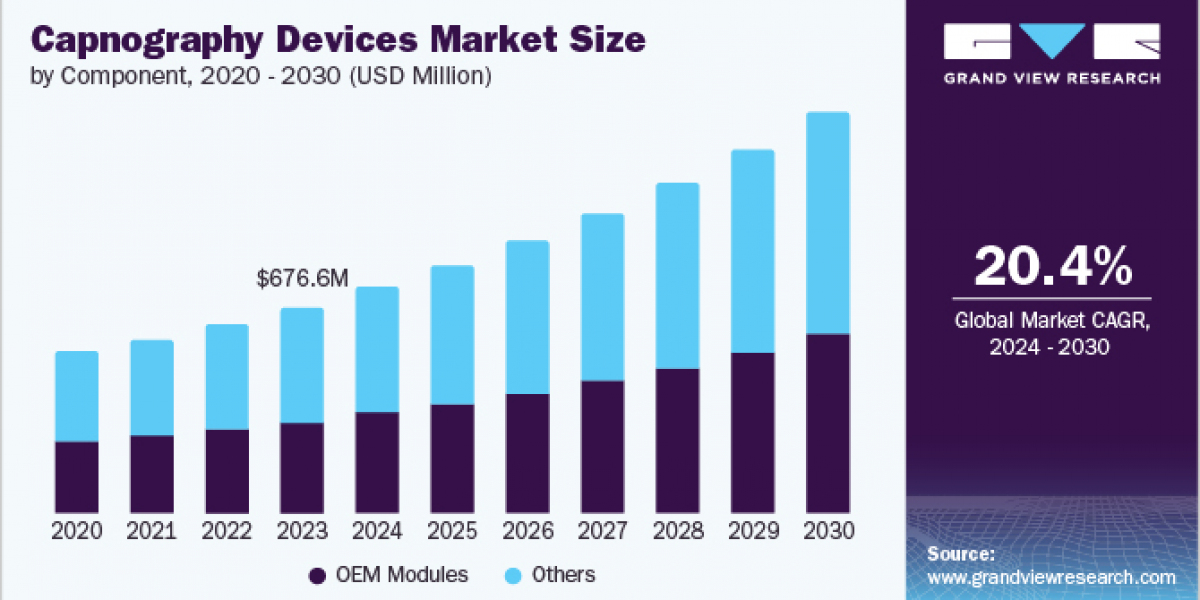The global capnography devices market was valued at USD 676.6 million in 2023 and is anticipated to grow at a compound annual growth rate (CAGR) of 10.0% from 2024 to 2030. This growth is expected to be fueled by advancements in technology, a rising incidence of respiratory conditions, and support from government initiatives. The increasing adoption of capnography for managing respiratory diseases is likely to improve the clinical effectiveness of these devices in patient monitoring due to their proven reliability and efficiency. For example, in 2022, 4.6% of adults were diagnosed with chronic obstructive pulmonary disease (COPD), emphysema, or chronic bronchitis at some point in their lives. Additionally, 4.2% of office-based physician visits documented COPD in medical records, and there were around 791,000 emergency department visits where COPD was the primary reason for seeking care.
Technological innovations in capnography, such as the emergence of portable and handheld devices, enhanced accuracy, and improved integration with other monitoring systems, are significantly contributing to market growth by making these devices more user-friendly and broadening their application range. For instance, in June 2022, Medtronic introduced a solution that allows clinicians to personalize care by integrating INVOS regional oximetry (rSO2) with Microstream capnography (CO2) technologies. These continuous monitoring solutions were incorporated into the GE Healthcare CARESCAPE precision monitoring platform, enhancing care in perioperative settings and intensive care units (ICUs).
Gather more insights about the market drivers, restrains and growth of the Capnography Devices Market
Component Segmentation Insights
In terms of market share, the "other components" segment led the market with a 57.2% share in 2023. This segment includes critical components of capnography devices such as sampling lines, sensors, airway adapters, anesthetic breathing circuits, cuvettes, cannulas, and Luer connectors. Among these, the sampling line is particularly vital, as the accuracy of end-tidal CO2 measurements and the quality of waveforms heavily depend on it. For example, in April 2021, Masimo received FDA 510(k) clearance for the Radius PCG, a portable, real-time capnograph featuring wireless Bluetooth connectivity. This device interfaces with the Connectivity Platform and Root Patient Monitoring, delivering precise, calibration-free measurements of end-tidal CO2 and respiration rates within 15 seconds.
The OEM modules segment is projected to experience the fastest growth, with a CAGR of 10.3% during the forecast period. OEM modules are extensively utilized in noninvasive patient monitoring and are typically sold to end users through distributors as replacement components for capnography devices. Many companies also collaborate with third-party partners for the development of OEM modules under the same brand, which helps lower costs and meet increasing demand. This trend, alongside growing OEM partnerships, is further propelling market expansion.
Order a free sample PDF of the Market Intelligence Study, published by Grand View Research.









